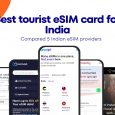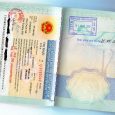Keeping yourself connected while traveling in Vietnam with good cell phone data is much better now. Whether you are interested in verifying some maps, calling your loved ones, or sharing your experiences on social networks, having the required data package is crucial.
This guide will show you how to get cellular data for Vietnam, including SIM & eSIM usage, and the proper plan selection. Let’s get started!
Table of Contents
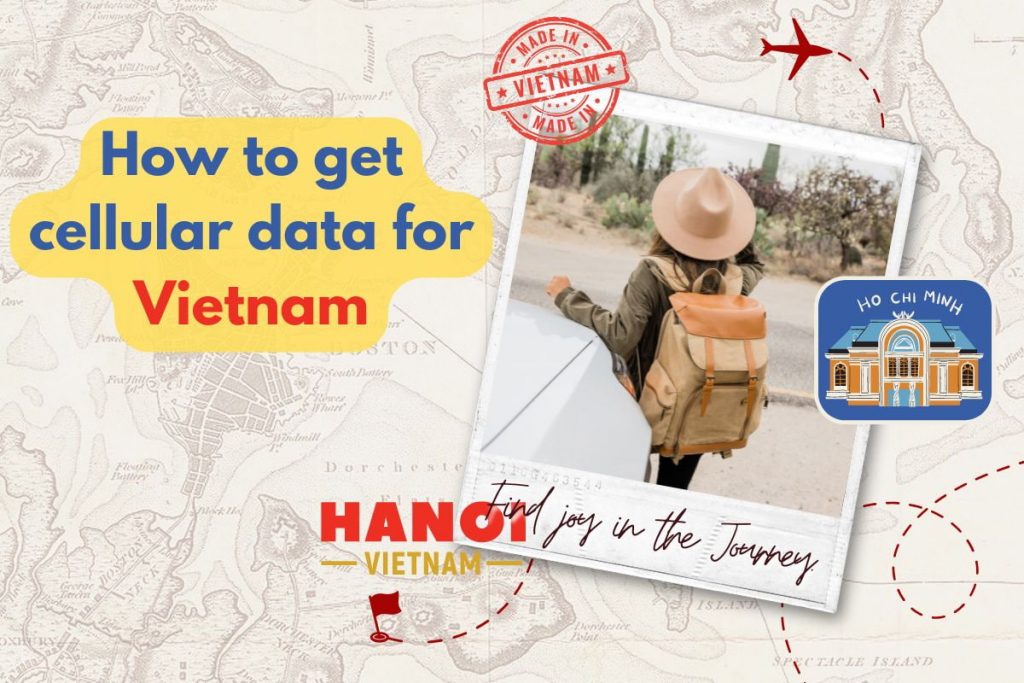
I. Understanding Your Options for Cellular Data in Vietnam
When traveling to Vietnam, you have 5 options for cellular data, each catering to different needs and preferences. The table below explains more.
| Option | Pros | Cons | Best For |
| Prepaid SIM Card | Flexible, easy to top up, widely available | Limited data validity, must purchase and replace physically | Short-term tourists |
| Postpaid SIM Card | Stable, fixed monthly allowance, good for long-term stays | Requires contract, not suited for short stays | Long-term visitors or residents |
| eSIM | No physical card needed, convenient, easy to activate online | Requires compatible phone, needs internet for activation | Tech-savvy travelers with compatible phones |
| Portable Wi-Fi Hotspot | Connect multiple devices, ideal for groups | Can be expensive, requires charging | Groups or multi-device users |
| International Roaming | No need to change SIM, keep your original number | Expensive, may have slower speeds | Those who prefer using their home network |
Recommendation: For most travelers in Vietnam, eSIM is the best choice if your phone supports it. It’s convenient since you don’t need a physical SIM card. You can activate it online and switch data plans easily. Plus, you can set it up before arriving in Vietnam.
If your phone doesn’t support eSIM, a prepaid SIM card is also a great option. It’s cheap, easy to buy at airports, and lets you control your data usage.
II. Choosing the Best Cellular Data Plan in Vietnam for Your Needs
When traveling to Vietnam, it’s important to have a good cellular data plan to stay connected. The main telecom companies – Viettel, Vinaphone, and MobiFone – offer different prepaid and tourist SIM cards, making it easy to find what you need.
| Operator | Plan & Price (VND) | Data Allowance | Validity | Coverage | Additional Features |
| Viettel | 60,000 (~$2.5) | 5GB high-speed | 15 days | Best in both urban & rural areas | Free 20 mins domestic calls |
| 100,000 (~$4.5) | Unlimited data (lower speed after cap) | 30 days | Extensive coverage across Vietnam | 20 mins international calls | |
| 200,000 (~$8.5) | Unlimited data (high speed) | 30 days | Strong nationwide, including rural areas | 100 mins domestic calls, 20 mins international calls | |
| Vinaphone | 199,000 (~$8.5) | 1GB/day (high-speed) | 15 days | Excellent in cities, weaker in rural areas | 50 mins international calls, 50 domestic mins, 50 SMS |
| 159,000 (~$6.8) | 6GB/day | 30 days | Best in urban areas | Free 200 off-net mins, 200 SMS | |
| MobiFone | 109,000 (~$4.5) | 8GB high-speed | 30 days | Strong in Southern Vietnam | 40 mins international calls |
In general:
- Viettel offers reliable coverage across Vietnam, especially in rural areas.
- Vinaphone is great for tourists in cities like Hanoi and Ho Chi Minh City.
- MobiFone is perfect for budget travelers in the south who need minimal data.
Each provider offers competitive plans, so you can choose based on your travel itinerary and data needs.
>> Read Best travel SIM and eSIM Cards for Vietnam to find out which one suits your needs.
III. How to Buy and Activate Your Cellular Data Plan in Vietnam?
Several options exist for buying and activating SIM cards or eSIMs in Vietnam. Here’s a detailed guide to help you.
Where to Buy SIM Cards or eSIMs?
Tourists can buy SIM cards or eSIMs in several convenient locations:
1. Airports
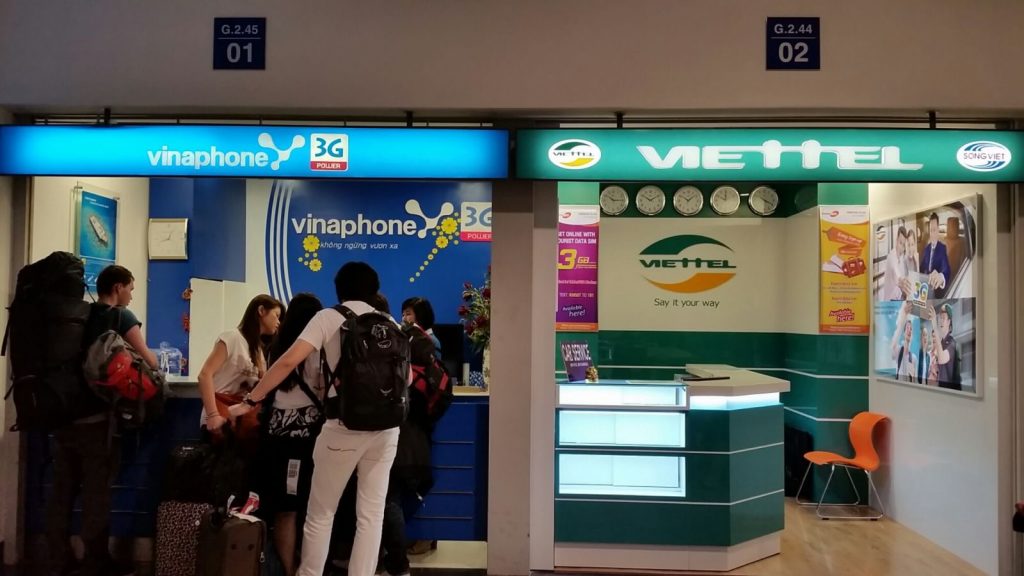
- Noi Bai International Airport (Hanoi): As you exit the baggage claim area, you’ll find several kiosks for SIM cards from operators like Viettel, Vinaphone, and MobiFone.
- Tan Son Nhat International Airport (Ho Chi Minh City) – in the arrival hall.
- Da Nang International Airport – in the baggage claim area.
2. Mobile Network Stores
- For Viettel offices for SIM cards in Hanoi, check https://vietteltelecom.vn/cua-hang
- For Vinaphone offices, check https://vinaphone.com.vn/ho-tro/diem-giao-dich
- For MobiFone offices, check https://www.mobifone.vn/ho-tro-khach-hang/vi-tri-cua-hang
3. Online (for eSIMs)
If your phone supports eSIMs, you can purchase one from providers like Gigago, Airalo, or Holafly. Once purchased, the eSIM is delivered via email, and you can activate it by scanning a QR code.
Activation Procedures
1. For Physical SIM Cards:
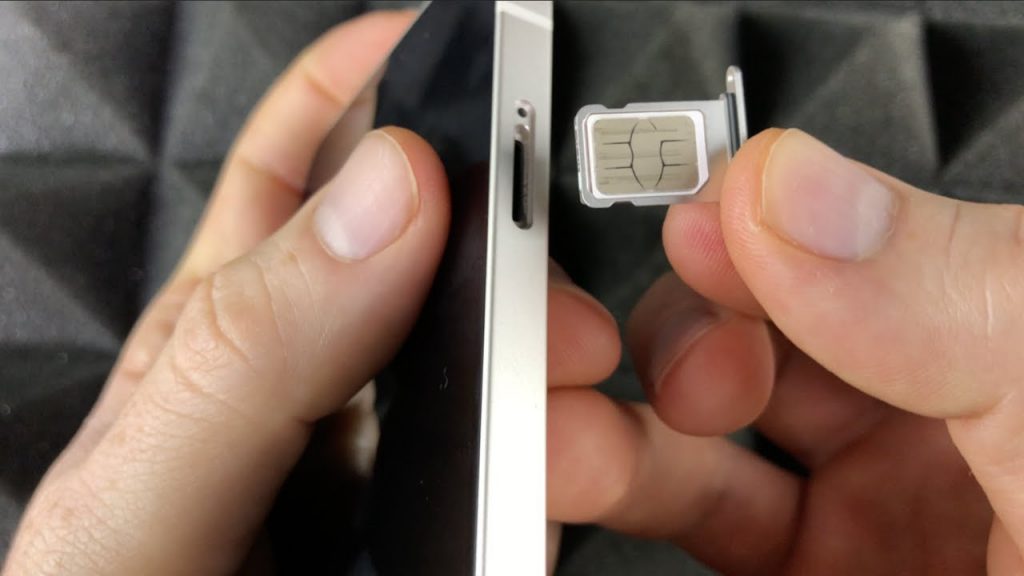
- Insert and Register: After buying a SIM card, store staff will help you insert it into your phone and register it with your passport, as Vietnamese law requires.
- Activate the Plan: Once registered, your phone connects to the network automatically. Some providers might ask you to dial a code to activate the data plan.
2. For eSIMs:
- Buy and Install: Purchase the eSIM online and get a QR code. On your phone, go to Settings > Cellular > Add Cellular Plan (iPhone) or Settings > Connections > SIM Card Manager (Android) and scan the QR code.
- Activate the eSIM: Choose the eSIM for mobile data in your settings after installing it. If needed, make sure Data Roaming is on.
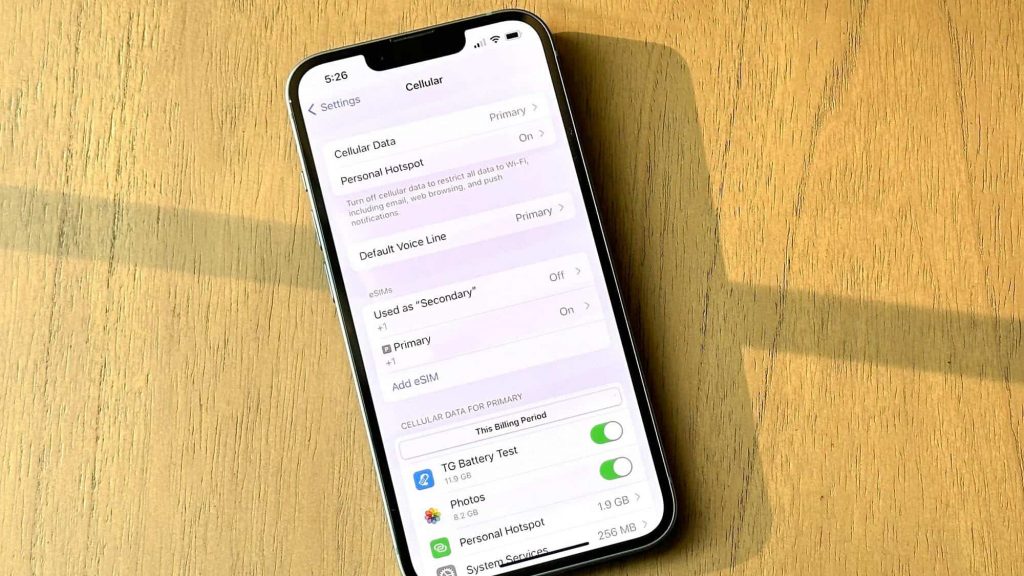
Required Documents
- Passport: Vietnamese law mandates that a passport be required for registration for physical SIM card purchases.
- No Documentation Needed for eSIM: eSIMs can be purchased online without providing any physical documents.
IV. Tips and Tricks for Using Cellular Data for Vietnam

Using cellular data in Vietnam can be convenient, but there are a few important tips and tricks to help you stay safe, manage your data usage, and troubleshoot common issues.
How to Stay Safe While Using Public Wi-Fi
- Avoid sensitive tasks: Public Wi-Fi, like in cafés or airports, is less safe than cellular data for Vietnam. Don’t log into banking apps or services needing personal info. Cellular is usually more secure.
- Use a VPN: If you must use public Wi-Fi, a VPN app can encrypt your connection and protect your data from hackers.
- Check Wi-Fi safety: Ensure the network is real. Avoid unsecured or unknown Wi-Fi networks, which can be risky.
How to Manage Data Usage and Avoid Overage Charges
- Close background apps: Some apps run in the background and use data. Turn off background data for apps that don’t need it.
- Download maps for offline use: Use apps like Google Maps to save maps before your trip, reducing data use while navigating.
- Check your data use: Regularly see how much data you’ve used. Both iPhones and Androids have tools to track this, and you can set alerts to avoid extra charges.
Tips for Troubleshooting Common Cellular Data Issues
- Check APN settings: If your data isn’t working after inserting a SIM or activating an eSIM, ensure your Access Point Name (APN) settings are correct.
- Restart your phone: Restarting your phone can fix temporary connection problems.
- Enable data roaming: If you use a foreign SIM or eSIM to access the internet, turn on data roaming in your phone’s settings.
Following these tips ensures a smoother and safer experience when using cellular data for Vietnam.
V. Conclusion
Hope that you find this guide helpful in navigating your options for getting cellular data for Vietnam. Whether you choose a prepaid SIM card or eSIM, staying connected is simple and affordable. Enjoy your travels with reliable data, and stay safe online by following the tips provided!


